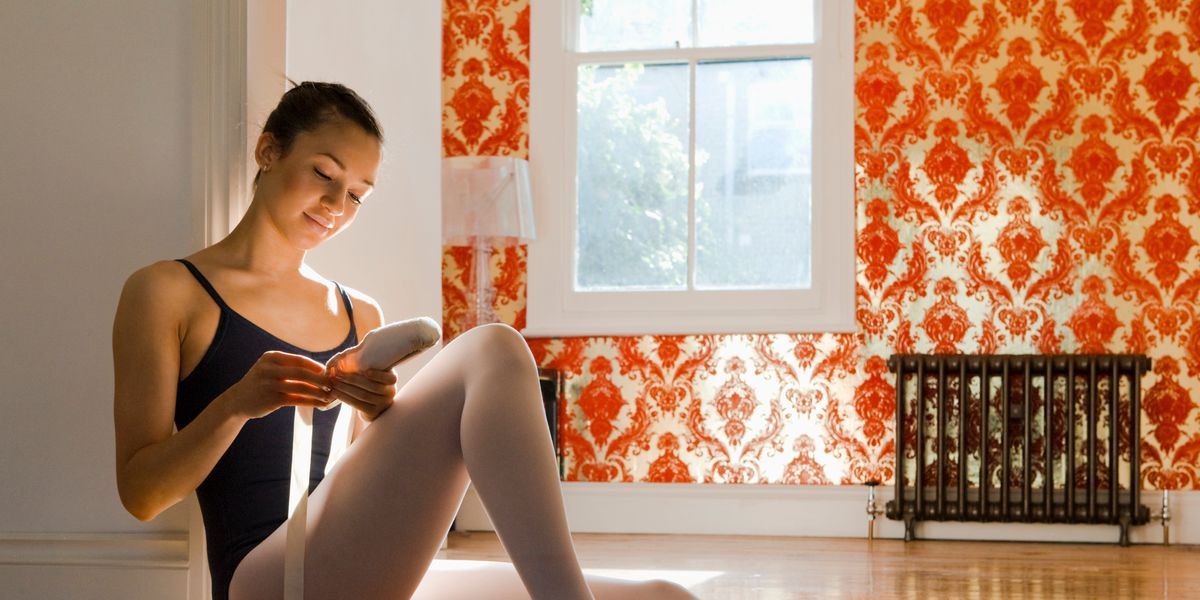5 Unexpected Upsides to Training Quarantine-Style
You’ve been dancing in self-isolation for five, maybe six, weeks now. The novelty has worn off, and you’re daydreaming about your long-anticipated homecoming to a studio filled with moving, breathing, sweating humans. If you had to pick what you miss most about the pre-COVID-19 dance world, maybe it’s dancing with your fellow bunheads in person, or traveling across a marley floor in one combination (pinch me, was that ever a real thing?), or not having to worry about grand battement-ing into your dog. It can feel like everything about training at home is sub-par.
But let’s consider the silver linings of this less-than-perfect situation. By acknowledging the opportunities at hand for progress and inspiration, we can continue growing as dancers—and dare I say as people—while we social dis-dance.
1. Less reliance on mirrors.
For the majority of dancers, training at home looks like taking barre at the kitchen counter or doing center work in a rearranged living room. If you’re one of the fortunate few to have an in-home studio, great! But many of us find ourselves training in mirrorless spaces for the time being.
While we wouldn’t want to train without mirrors forever, dancing without your reflection does have its upside. You have to feel your muscles and placement rather than looking to check in the mirror. Case in point: Have you ever had that teacher who makes the class turn away from the mirror and repeat a combination? There’s a method to that madness. Now’s your chance to use your épaulement and develop your artistry without the temptation to glue your eyes to the mirror and relentlessly self-correct. We dancers are perfectionists, and sometimes a hiatus from all those staring contests with our inner critic in the mirror is just what we need.
2. No one to follow if you don’t know the steps.
Even if you are using Zoom to take class with other dancers, virtual class means that it’s not so easy to follow along if you’re unsure about the combination. (I don’t know about your eyesight, but those boxes in gallery mode are awfully small, and, ironically, the larger the class size, the smaller the dancing!) Without a room full of fellow students to watch, dancers can challenge themselves to really learn the steps and the timing on their own.

3. More time to slow down and correct technique issues.
When you’re dancing all day, it may not be as easy to go slowly and focus on technique during class. There are shows to prepare for, challenging combinations to master and partnering exercises to work on. With more time on our hands, we can slow things down. Been meaning to improve your balance, strengthen your core or work on keeping your hips still during dégagés? Now you can—and at your own pace.
4. The option to dance outside.
If you’re lucky enough to have a backyard, why not take your next class or improv session out in the spring sunshine? So long as the ground is even, the opportunity to dance outside can bring fresh inspiration and motivation. The outdoors can provide a needed change of scenery, offer new perspective while you dance and allow your imagination to roam freely as you improvise or choreograph. (And why not have fun channeling your inner Isadora Duncan while you’re at it?)

5. The ability to experiment with different teachers.
There are opportunities aplenty to learn from coaches, studios and companies that dancers would not have easy access to when everything is business as usual. Dance professionals are live-streaming classes from their basements, posting videos of training routines on YouTube, offering coaching lessons through Skype and teaching master classes on Zoom. Without our regularly scheduled programs to attend, we can branch out and learn from faces and places we can’t normally access. And a new teacher might give just the advice or encouragement you needed to hear.




